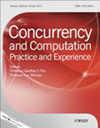Monitoring and Characterizing GPU Usage
Abstract
For systems with an accelerator component, it is important from an operational and planning perspective to understand how and to what extent the accelerators are being used. Having a framework for tracking the utilization of accelerator resources is important both for judging how efficiently used a system is and for capacity and configuration planning of future systems. In addition to tracking total utilization and accelerator efficiency numbers, some attention should also be paid to the types of research and workflows that are being executed on the system. In the past, the demand for accelerator resources was largely driven by more traditional simulation codes, such as molecular dynamics. But with the growing popularity of deep learning and artificial intelligence workflows, accelerators have become even more highly sought after and are being used in new ways. Provisioning resources to researchers via an allocation system allows sites to track a project's usage and workflow as well as the scientific impact of the project. With such tools and data in hand, characterizing the GPU utilization of deep learning frameworks versus more traditional GPU-enabled applications becomes possible. In this paper we present a survey of GPU monitoring tools used in sites and a framework for tracking the utilization of NVIDIA GPUs on Slurm-scheduled HPC systems used at Indiana University. We also present an analysis of accelerator utilization on multiple systems, including an HPE Apollo system targeting AI workflows and a Cray EX system.

 求助内容:
求助内容: 应助结果提醒方式:
应助结果提醒方式:


